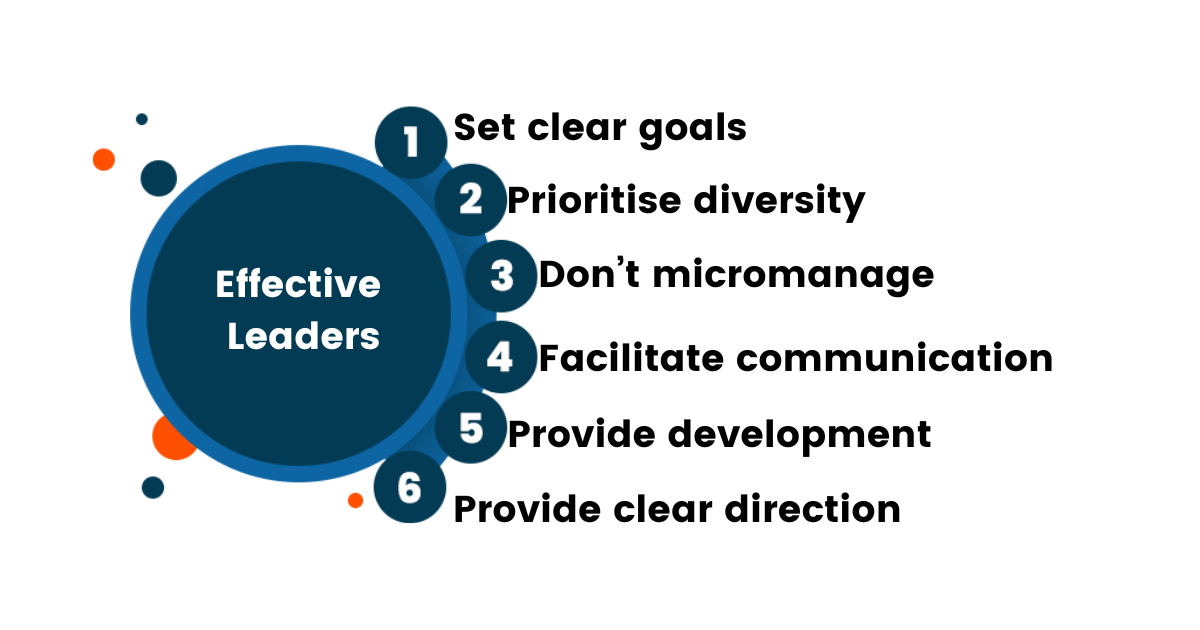
What’s the secret to building a successful small business? Of course, there’s no universally acceptable answer to that question. But, ask any SMB owner, and they’ll tell you how their team members are their most valuable assets.
Case in point: Employees who are energised and excited about their work are 31 percent more likely to go above and beyond. Figures like these emphasise the importance of building effective teams and managing them the right way.
In this article, we’ll take a closer look at what it means to build and manage a great team so you can establish a strong foundation for your organisation.

What does a successful team look like?
Simply put, a successful team is one where individual team members deliver high-quality work on time. And they do it without feeling burdened or burnt out.
Regardless of the industry or scale of an organisation, an effective team will exhibit the following characteristics:
- Shared values: The entire team is aligned toward predefined values, objectives, and expectations. All members work in harmony for the team’s success.
- Open communication: Team members are always on the same page, irrespective of whether they’re working on-site or in a hybrid setting.
- High sense of ownership: Every team member is willing to go above and beyond what’s expected to achieve common goals.
- Willingness to face challenges: Team members treat every challenge as a new learning opportunity and use problem-solving tactics to overcome it.
- Delegation of tasks: The leader identifies team members with the right skill sets and assigns suitable tasks to them.
- Trust and respect: Each person in the team feels confident about sharing their ideas and opinions without the fear of being criticised, ridiculed, or manipulated.
How to build effective teams: A few valuable tips

Building effective teams and managing them properly improves employee engagement. That, in turn, motivates team members to do their best work and even helps increase retention.
But here’s the thing—smaller businesses may lack the resources available to larger organisations. For instance, you might not have funds to take employees out on fun team-building activities or offer monetary incentives every quarter.
So how do you build and manage a team effectively with limited resources? Follow these steps to get started.
1. Set clear goals and expectations

Establishing goals at the outset provides team members with a sense of purpose. It also helps them prioritise the right tasks to accomplish their milestones. Plus, they’re in a better position to align their work with overarching business goals. It’s particularly crucial when you’re working with a remote team.
Consider using a goal-setting framework like SMART (Specific, Measurable, Achievable, Realistic, Time-Bound) to define clear goals.
While you’re at it, define your expectations by setting ground rules, such as:
- How quickly should team members respond to emails and messages?
- Is it okay for them to hold off replying to emails after work hours?
- Are there any expressions or phrases they must avoid in conversations?
- What factors will you consider when evaluating their performance?
2. Prioritise diversity
Team members from different backgrounds and lifestyles with varied skill sets bring new ideas and perspectives to the table. This fosters innovation, boosts teamwork, speeds up problem-solving, and pinpoints workplace biases that kill productivity. It can also help identify and tap into new growth opportunities.
It’s only natural that 56 percent of employed adults in the US believe that focusing on diversity is a good thing.

So, if you’re looking to build an effective cohesive team, make it a point to onboard a diverse array of team members.
3. Don’t micromanage
Your team members don’t need you to stand over their shoulders and monitor their work. That kind of team management is distracting and gets in the way of their best work. Also, it sends the message that you don’t trust them and goes against your idea of team building.
Instead, break down team goals into smaller tasks and assign each task to a team member with relevant skills. Alternatively, it’s a good idea to identify team members with complementary skill sets and assign suitable tasks to them.
Conduct group team meetings or one-on-one sessions at regular intervals to track progress. Ask about the challenges they’re facing on the job and what will help them accomplish their goals more efficiently. This is also a good time to share feedback on their performance and offer advice on how they can improve.
4. Facilitate healthy communication and collaboration
It’s one thing to ask team members to keep each other in the loop. But how can you ensure they actually do that? The key is to create open channels of communication and collaboration with the right tools, regardless of whether your team meets in the office every day or works remotely.
For instance, you can provide them with cloud storage solutions to simplify file-sharing.
Similarly, customer relationship management (CRM) systems can come in handy for customer-facing teams. For example, sales team members can use a CRM to monitor a lead’s status and even assign follow-up reminders to their coworkers.
Besides providing the right tools, encourage team members to listen to each other and engage in healthy debates. The idea is to offer constructive feedback to coworkers instead of dismissing their ideas outright.
5. Provide opportunities for development
Your team will typically include a handful of top performers and underperformers. However, the majority of your team members will fall into the bracket of middle performers. These are the people who need the right push to do their jobs better.
As a leader, it’s up to you to identify middle or average performers and provide them with suitable learning opportunities to elevate them to the high-performers category. It’ll make them feel seen and motivate them to give their best. Equipped with an advanced skill set, they’ll be in a better position to deliver on your expectations.
6. Build your leadership skills
Whether you’re a business owner or in a leadership role, you set the bar for other members. So, you must imbibe the qualities you want to inculcate in others.
Start by developing strong leadership skills, including active listening, clear communication, and empathy. Also, seek feedback from your team to understand what you can do better. When you demonstrate vulnerability, you earn the respect of your team, which, in turn, inspires them to do their best work.
Improve your team’s communication with Act!

A strong team thrives on open communication, respect, and trust. The key is to ensure all members have a unified view of the team’s objectives and values. It’s also crucial to provide them with open channels for connecting and sharing their ideas.
With Act!, customer-facing teams can access information about potential, existing, and new clients. Team leaders can monitor the performance of different sales reps and provide them with suitable feedback. Sign up for a free trial to see how Act! can help you build an effective team.






